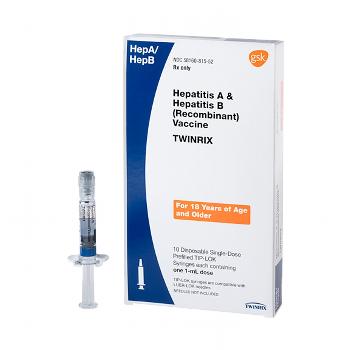Recommendations from the CDC for Hepatitis A/B Twinrix Vaccination:
Routine Vaccination for Adults:
- The Twinrix vaccine is recommended for adults aged 18 years and older who are at increased risk for Hepatitis A and Hepatitis B, including:
- Travelers to areas where Hepatitis A is common.
- Men who have sex with men.
- People who inject drugs.
- Individuals with chronic liver disease.
Vaccination Schedule:
- The Twinrix vaccination series consists of three doses:
- The first dose can be administered at any time.
- The second dose is given 1 month after the first dose.
- The third dose is given 6 months after the first dose.
- Alternative schedules may be available for specific populations; consult a healthcare provider for personalized recommendations.
Post-Exposure Prophylaxis:
- For individuals exposed to Hepatitis A or Hepatitis B, the Twinrix vaccine can be used as post-exposure prophylaxis, ideally administered within two weeks of exposure.
Travel Considerations:
- Travelers to countries with high rates of Hepatitis A or B should receive the vaccine at least 2 weeks prior to departure to ensure adequate protection.
Special Populations:
- Healthcare and public safety workers who may be exposed to blood or bodily fluids should consider vaccination.
- Individuals with specific lifestyles or living conditions that increase their risk for Hepatitis A or B should also receive the vaccine.
Important Considerations:
- The Twinrix vaccine is administered as an intramuscular injection, typically in the upper arm.
- Common side effects may include soreness at the injection site, mild fever, fatigue, and headache. Serious side effects are rare.
- The vaccine is effective in preventing both Hepatitis A and Hepatitis B infections, providing long-lasting immunity against these diseases.
The Hepatitis A/B Twinrix Vaccination is a crucial tool in preventing both Hepatitis A and B infections, safeguarding individual health, and enhancing public health efforts to control these preventable diseases.
Why do I need the Hepatitis A/B Twinrix Vaccine?
The Twinrix Vaccine is important for:
Preventing both hepatitis A and hepatitis B infections: These viruses can cause severe liver disease. Hepatitis A is transmitted through contaminated food and water, while hepatitis B is spread through blood and body fluids.
Reducing the risk of severe complications: Both viruses can lead to serious health issues, such as liver cirrhosis, liver cancer, and, in some cases, death.
Convenience: Twinrix combines protection against hepatitis A and B in a single vaccine, reducing the number of injections required for full protection.
Protection for high-risk groups: Individuals who travel to regions where hepatitis A and B are prevalent, healthcare workers, people with chronic liver disease, and those who engage in high-risk behaviors (e.g., injection drug use) benefit from the dual protection offered by Twinrix.
Who should receive the Hepatitis A/B Twinrix Vaccine?
The Twinrix Vaccine is recommended for:
Adults aged 18 years and older who are at risk for hepatitis A or B, including:
Travelers to areas with high or intermediate rates of hepatitis A and B.
Healthcare workers, emergency responders, and public safety personnel.
Individuals with chronic liver disease, including those with hepatitis C.
Individuals who engage in high-risk behaviors, such as injecting drugs, having multiple sexual partners, or men who have sex with men.
People who work in settings with potential exposure to these viruses, such as labs or facilities handling hepatitis samples.
Anyone who wants protection from both hepatitis A and B, even if not in a high-risk category, may also receive the vaccine for added protection.
How many doses of the Hepatitis A/B Twinrix Vaccine are needed?
The standard vaccination schedule for Twinrix involves three doses:
Dose 1: The initial dose.
Dose 2: Given 1 month after the first dose.
Dose 3: Given 6 months after the first dose.
An accelerated schedule is also available for those who need rapid protection (e.g., last-minute travelers):
Dose 1: The initial dose.
Dose 2: Given 7 days after the first dose.
Dose 3: Given 21–30 days after the first dose.
Booster dose: A final booster dose is recommended 12 months after the first dose.
